Attack Agnostic Adversarial Defense via Visual Imperceptible Bound
Saheb Chhabra,
Akshay Agarwal,
Richa Singh,
Mayank Vatsa
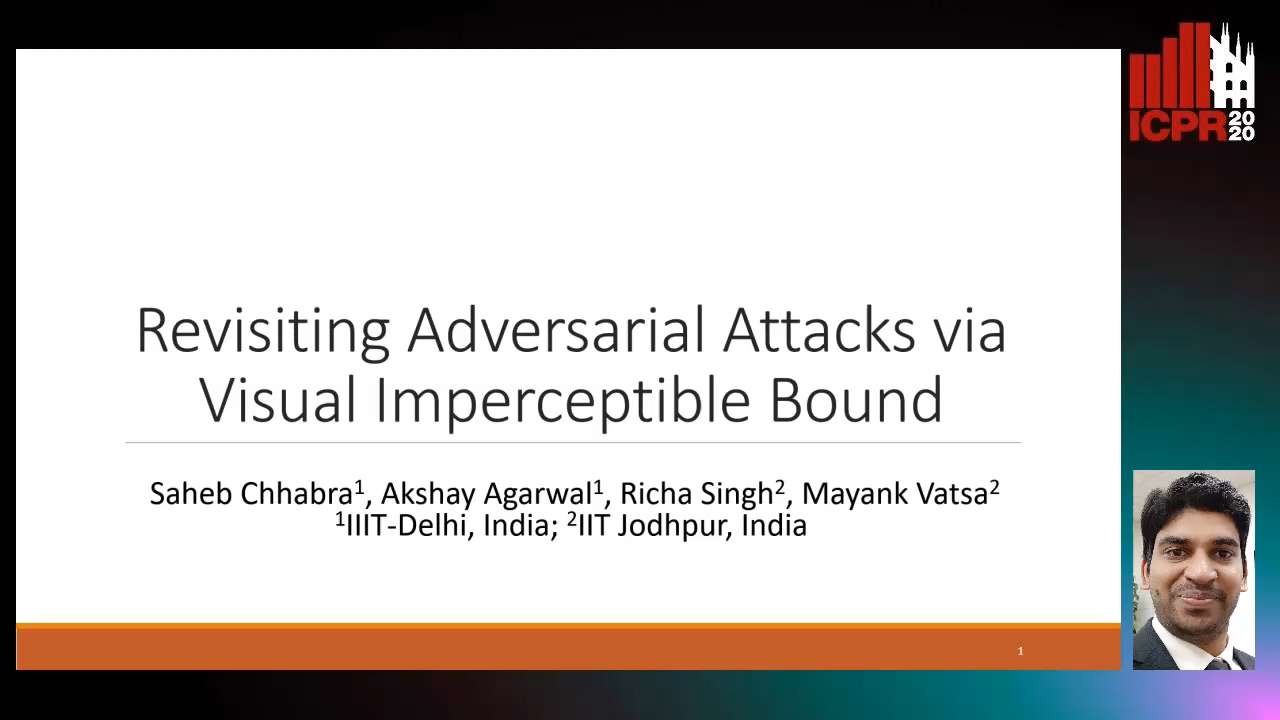
Auto-TLDR; Robust Adversarial Defense with Visual Imperceptible Bound
Similar papers
Defense Mechanism against Adversarial Attacks Using Density-Based Representation of Images
Yen-Ting Huang, Wen-Hung Liao, Chen-Wei Huang
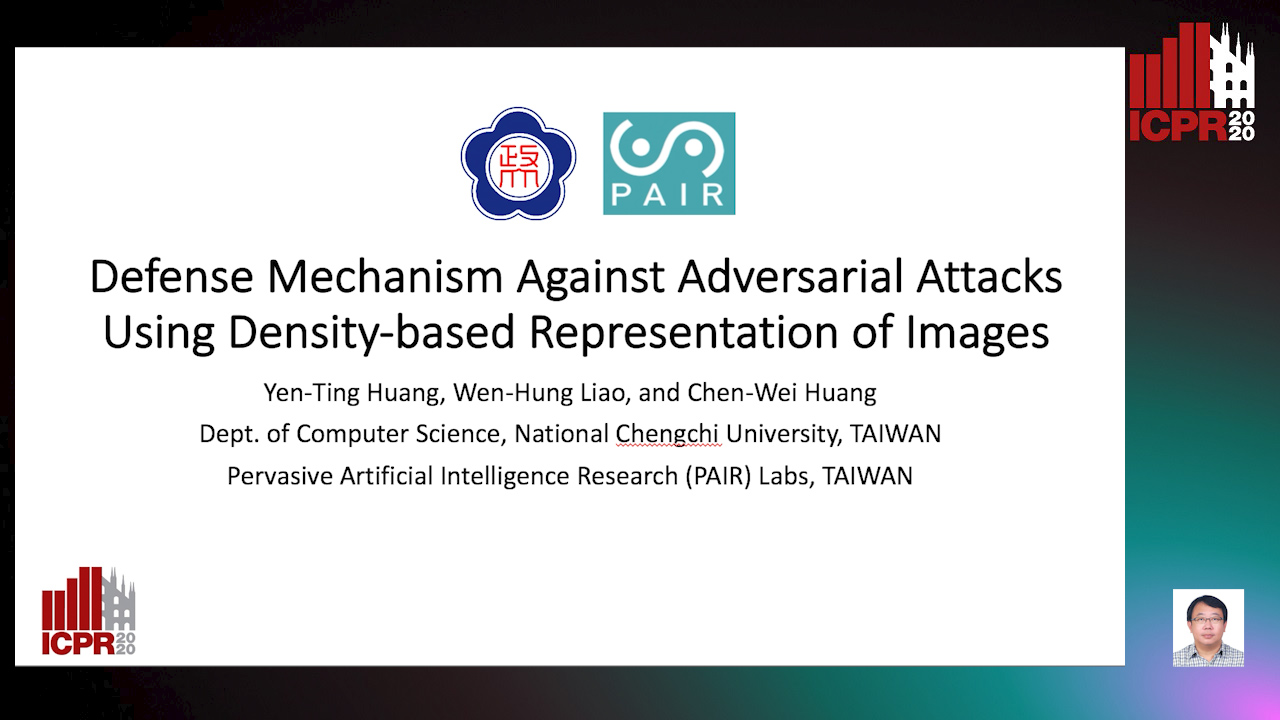
Auto-TLDR; Adversarial Attacks Reduction Using Input Recharacterization
Abstract Slides Poster Similar
Variational Inference with Latent Space Quantization for Adversarial Resilience
Vinay Kyatham, Deepak Mishra, Prathosh A.P.

Auto-TLDR; A Generalized Defense Mechanism for Adversarial Attacks on Data Manifolds
Abstract Slides Poster Similar
Optimal Transport As a Defense against Adversarial Attacks
Quentin Bouniot, Romaric Audigier, Angélique Loesch
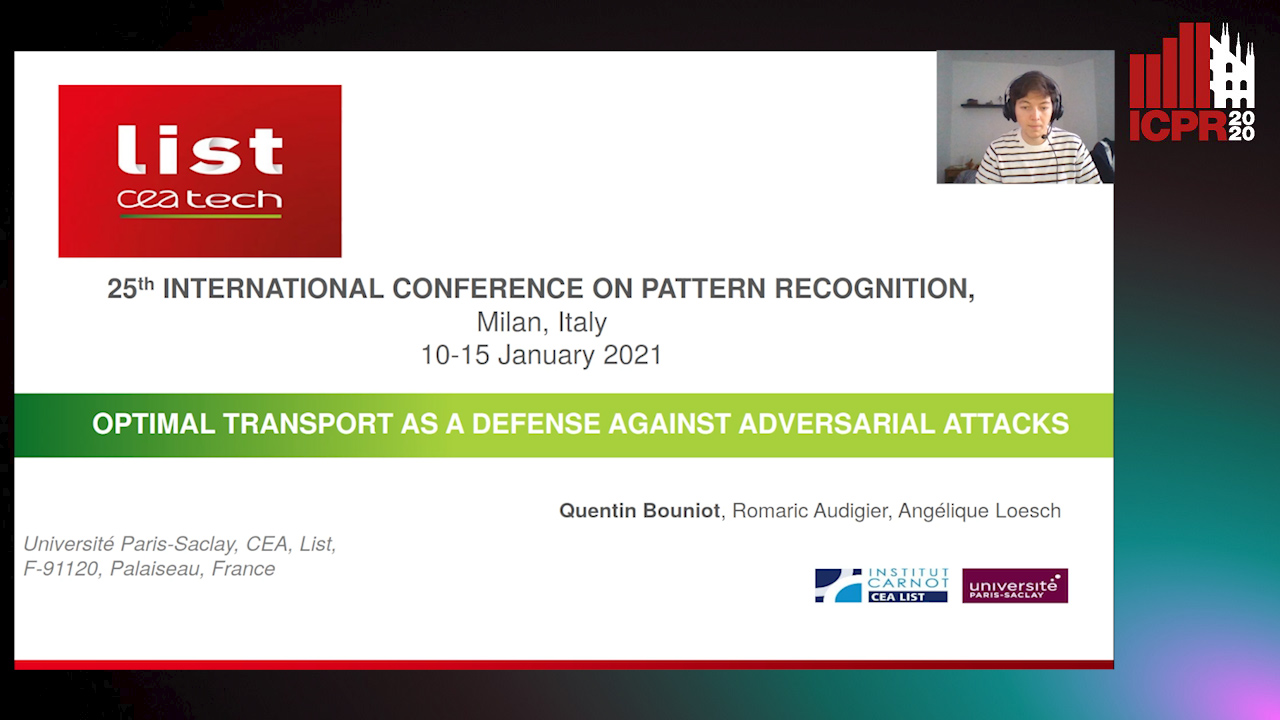
Auto-TLDR; Sinkhorn Adversarial Training with Optimal Transport Theory
Abstract Slides Poster Similar
Accuracy-Perturbation Curves for Evaluation of Adversarial Attack and Defence Methods
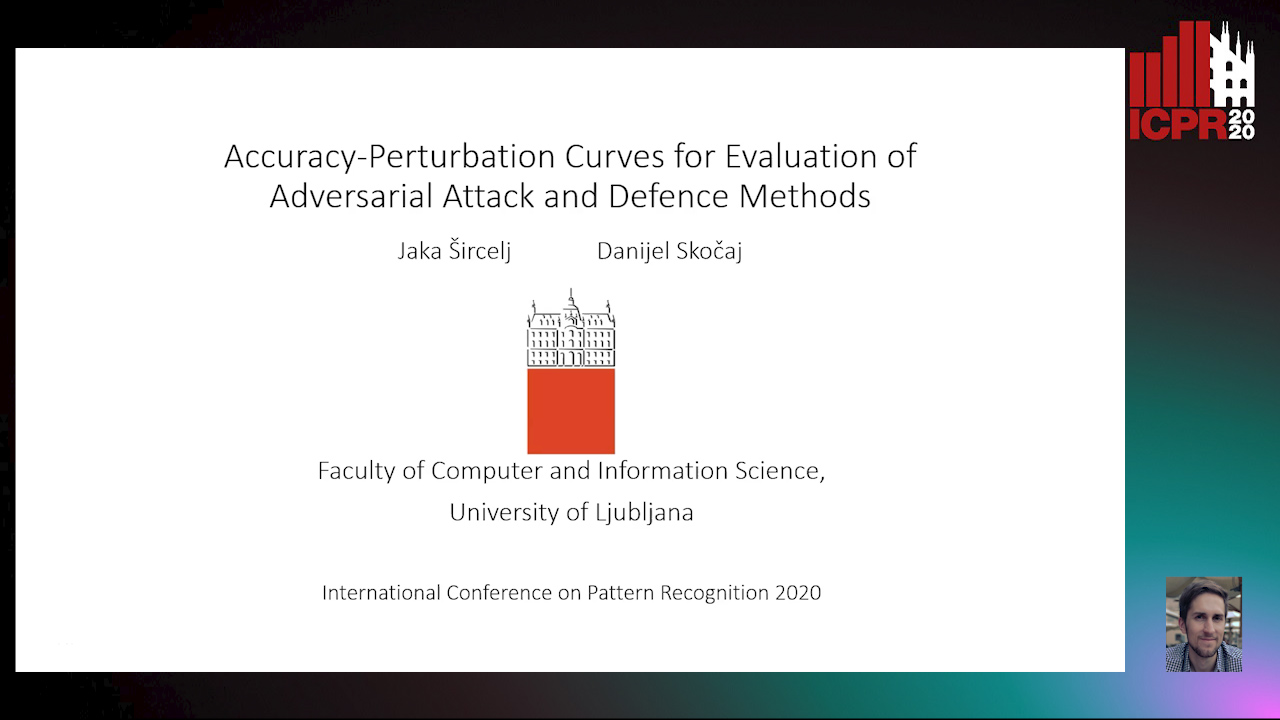
Auto-TLDR; Accuracy-perturbation Curve for Robustness Evaluation of Adversarial Examples
Abstract Slides Poster Similar
Beyond Cross-Entropy: Learning Highly Separable Feature Distributions for Robust and Accurate Classification
Arslan Ali, Andrea Migliorati, Tiziano Bianchi, Enrico Magli

Auto-TLDR; Gaussian class-conditional simplex loss for adversarial robust multiclass classifiers
Abstract Slides Poster Similar
A Delayed Elastic-Net Approach for Performing Adversarial Attacks
Brais Cancela, Veronica Bolon-Canedo, Amparo Alonso-Betanzos
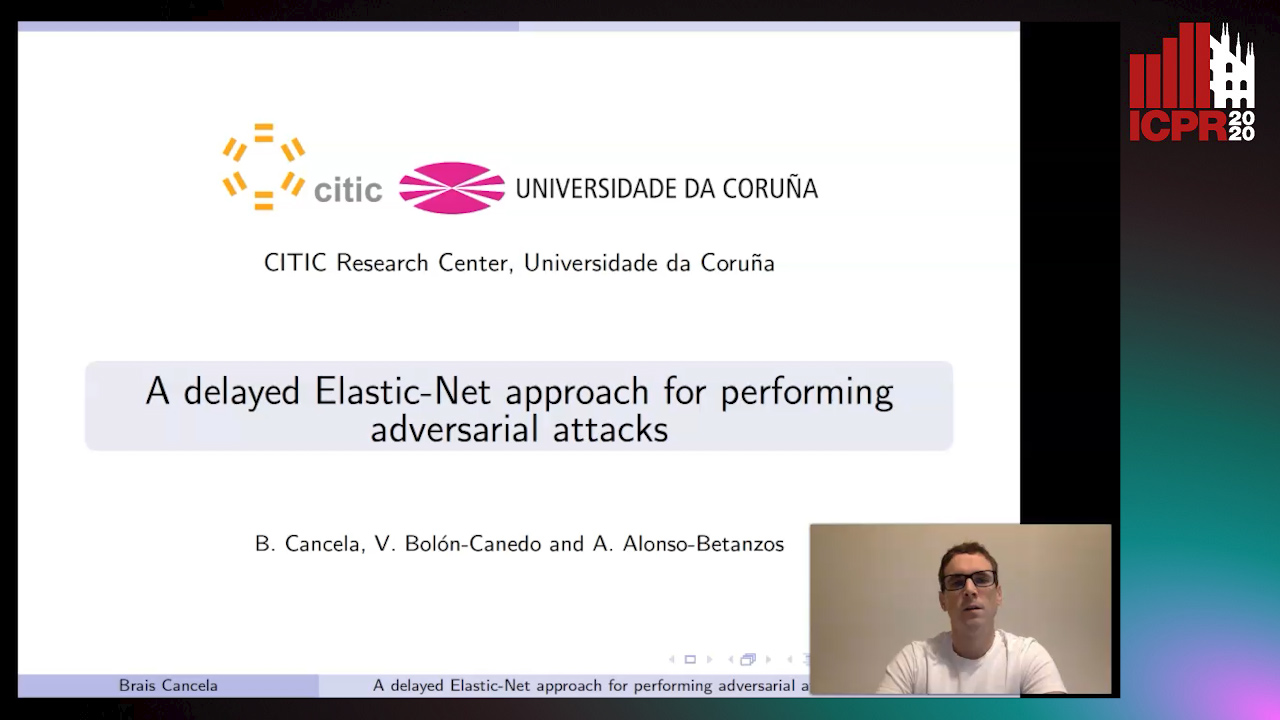
Auto-TLDR; Robustness of ImageNet Pretrained Models against Adversarial Attacks
Abstract Slides Poster Similar
Adversarially Training for Audio Classifiers
Raymel Alfonso Sallo, Mohammad Esmaeilpour, Patrick Cardinal

Auto-TLDR; Adversarially Training for Robust Neural Networks against Adversarial Attacks
Abstract Slides Poster Similar
Adaptive Noise Injection for Training Stochastic Student Networks from Deterministic Teachers
Yi Xiang Marcus Tan, Yuval Elovici, Alexander Binder

Auto-TLDR; Adaptive Stochastic Networks for Adversarial Attacks
F-Mixup: Attack CNNs from Fourier Perspective
Xiu-Chuan Li, Xu-Yao Zhang, Fei Yin, Cheng-Lin Liu
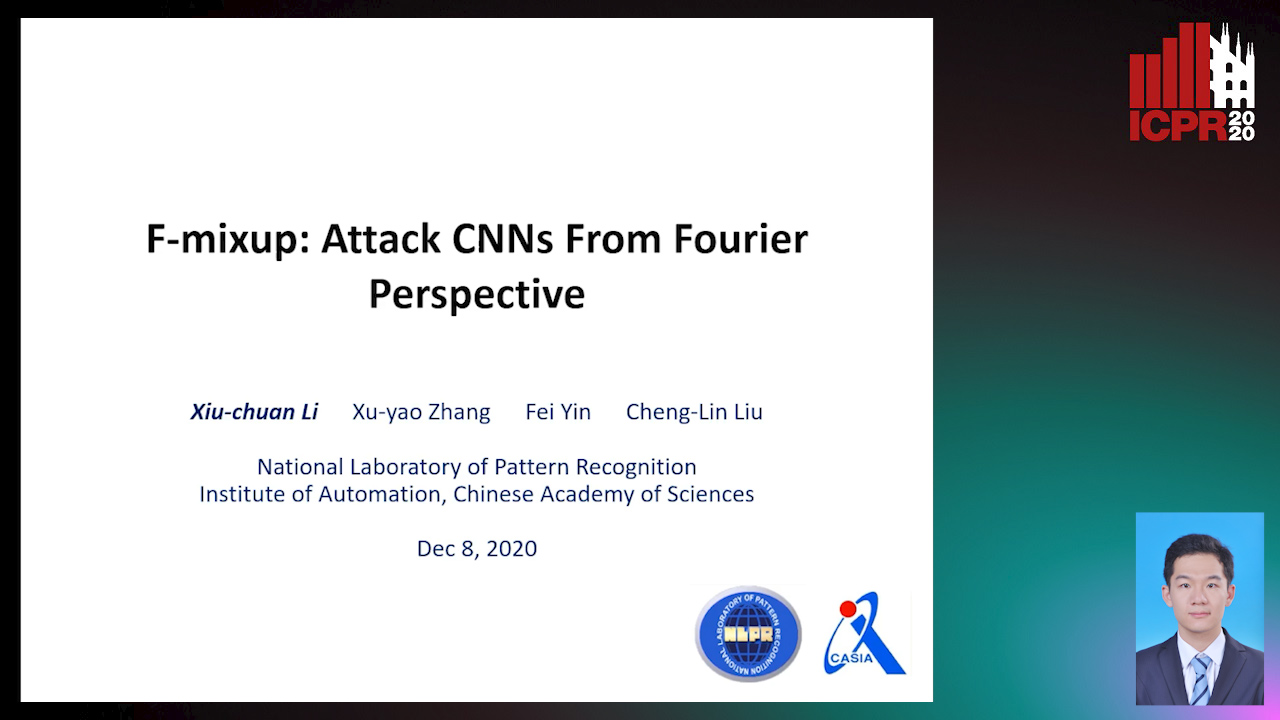
Auto-TLDR; F-Mixup: A novel black-box attack in frequency domain for deep neural networks
Abstract Slides Poster Similar
Task-based Focal Loss for Adversarially Robust Meta-Learning
Yufan Hou, Lixin Zou, Weidong Liu

Auto-TLDR; Task-based Adversarial Focal Loss for Few-shot Meta-Learner
Abstract Slides Poster Similar
Polynomial Universal Adversarial Perturbations for Person Re-Identification
Wenjie Ding, Xing Wei, Rongrong Ji, Xiaopeng Hong, Yihong Gong
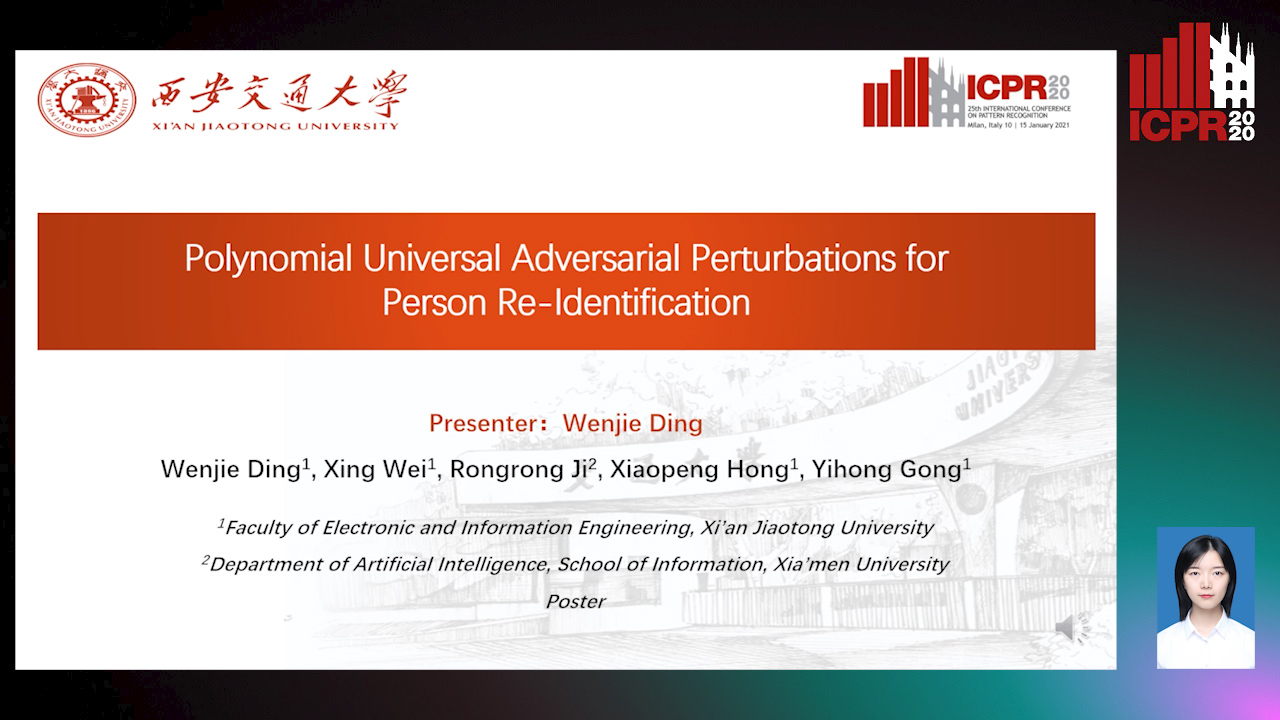
Auto-TLDR; Polynomial Universal Adversarial Perturbation for Re-identification Methods
Abstract Slides Poster Similar
Verifying the Causes of Adversarial Examples
Honglin Li, Yifei Fan, Frieder Ganz, Tony Yezzi, Payam Barnaghi

Auto-TLDR; Exploring the Causes of Adversarial Examples in Neural Networks
Abstract Slides Poster Similar
Cost-Effective Adversarial Attacks against Scene Text Recognition
Mingkun Yang, Haitian Zheng, Xiang Bai, Jiebo Luo

Auto-TLDR; Adversarial Attacks on Scene Text Recognition
Abstract Slides Poster Similar
AdvHat: Real-World Adversarial Attack on ArcFace Face ID System
Stepan Komkov, Aleksandr Petiushko
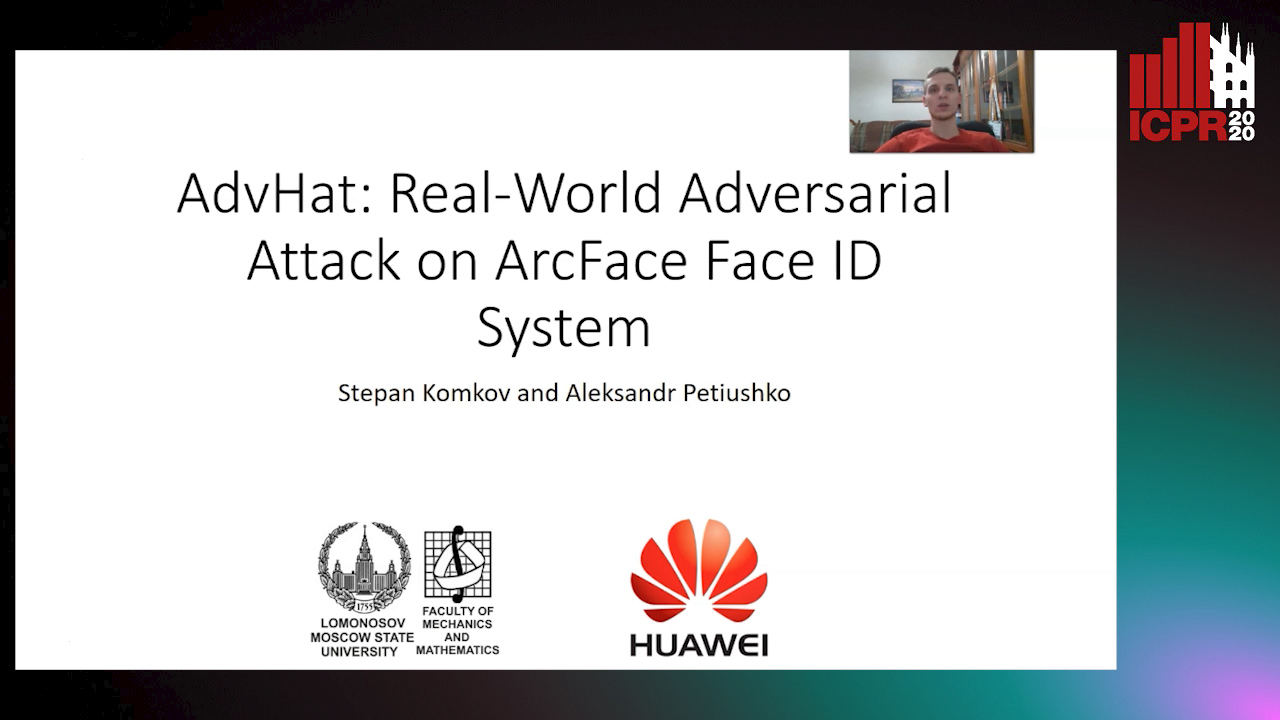
Auto-TLDR; Adversarial Sticker Attack on ArcFace in Shooting Conditions
Abstract Slides Poster Similar
Killing Four Birds with One Gaussian Process: The Relation between Different Test-Time Attacks
Kathrin Grosse, Michael Thomas Smith, Michael Backes

Auto-TLDR; Security of Gaussian Process Classifiers against Attack Algorithms
Abstract Slides Poster Similar
Explain2Attack: Text Adversarial Attacks via Cross-Domain Interpretability
Mahmoud Hossam, Le Trung, He Zhao, Dinh Phung
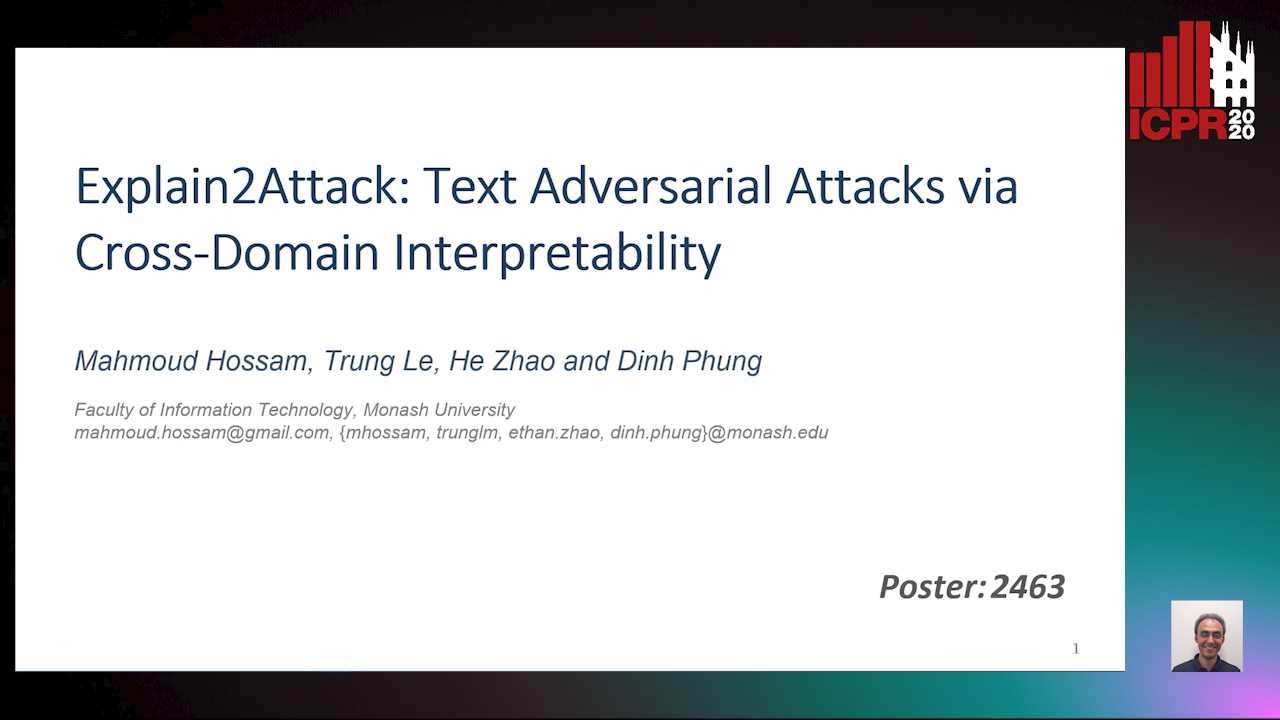
Auto-TLDR; Transfer2Attack: A Black-box Adversarial Attack on Text Classification
Abstract Slides Poster Similar
Transferable Adversarial Attacks for Deep Scene Text Detection
Shudeng Wu, Tao Dai, Guanghao Meng, Bin Chen, Jian Lu, Shutao Xia

Auto-TLDR; Robustness of DNN-based STD methods against Adversarial Attacks
Attack-Agnostic Adversarial Detection on Medical Data Using Explainable Machine Learning
Matthew Watson, Noura Al Moubayed

Auto-TLDR; Explainability-based Detection of Adversarial Samples on EHR and Chest X-Ray Data
Abstract Slides Poster Similar
Generalized Iris Presentation Attack Detection Algorithm under Cross-Database Settings
Mehak Gupta, Vishal Singh, Akshay Agarwal, Mayank Vatsa, Richa Singh
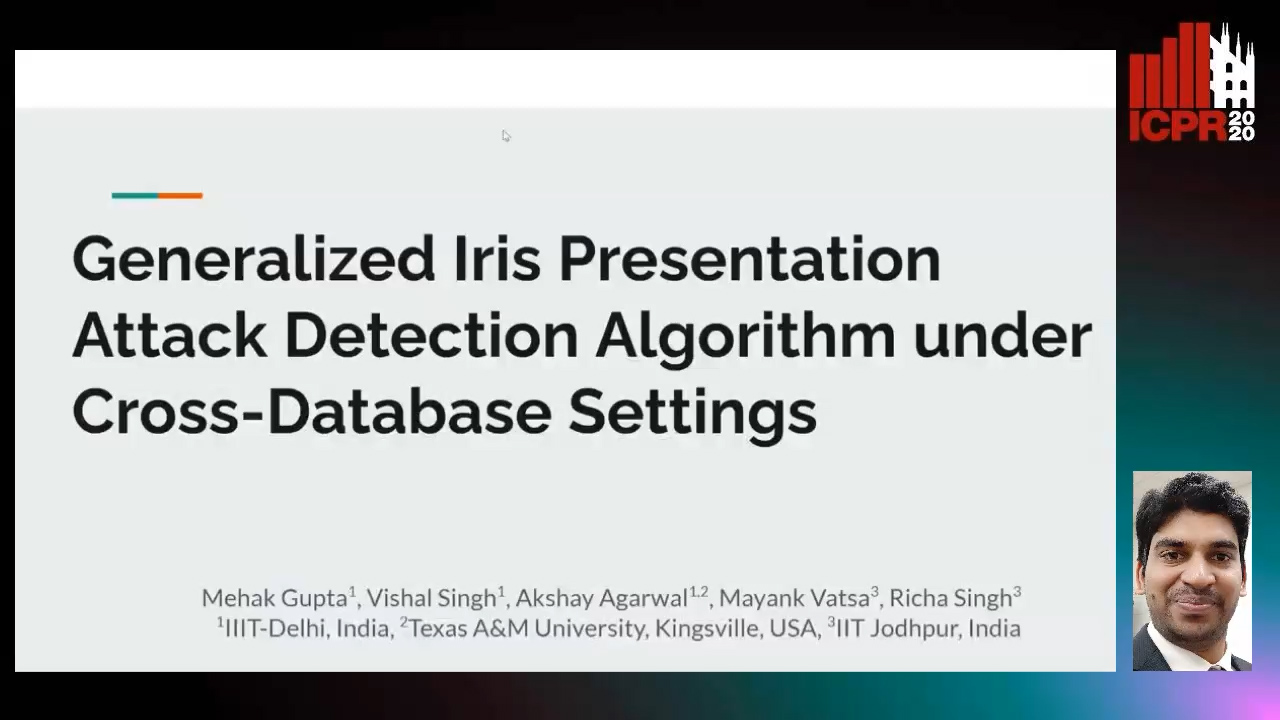
Auto-TLDR; MVNet: A Deep Learning-based PAD Network for Iris Recognition against Presentation Attacks
Abstract Slides Poster Similar
On the Robustness of 3D Human Pose Estimation
Zerui Chen, Yan Huang, Liang Wang
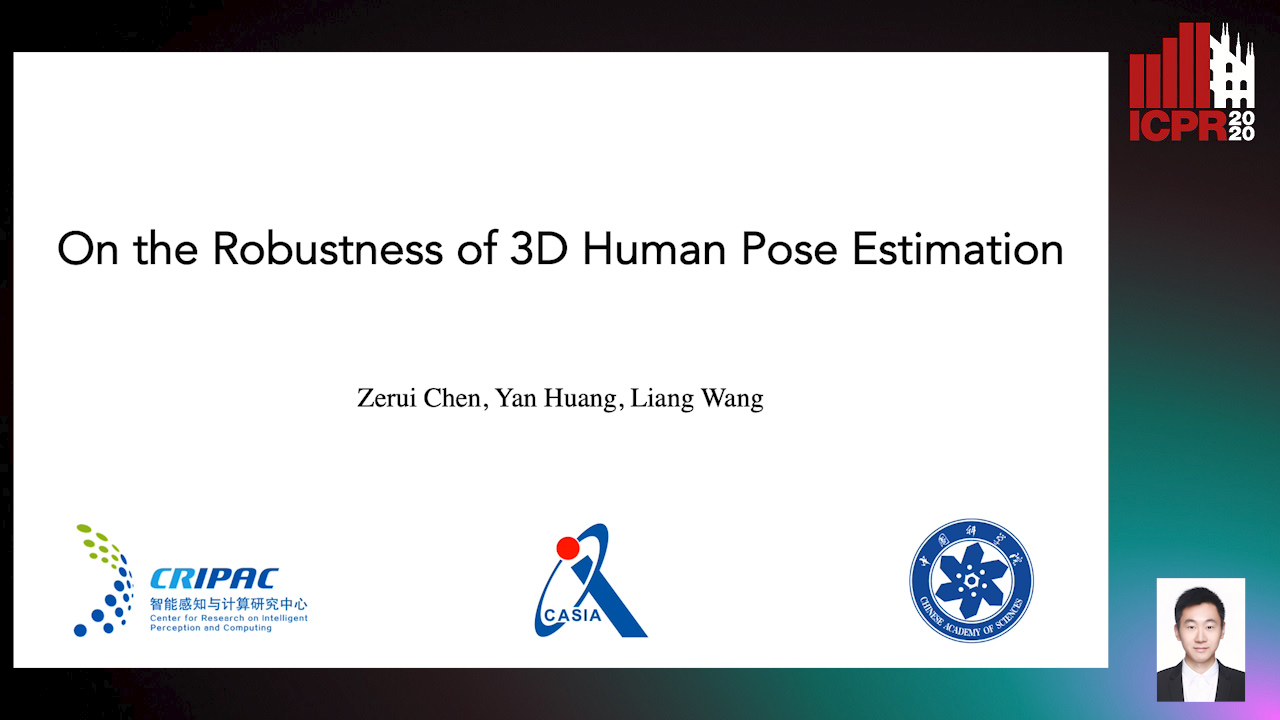
Auto-TLDR; Robustness of 3D Human Pose Estimation Methods to Adversarial Attacks
Towards Explaining Adversarial Examples Phenomenon in Artificial Neural Networks
Ramin Barati, Reza Safabakhsh, Mohammad Rahmati
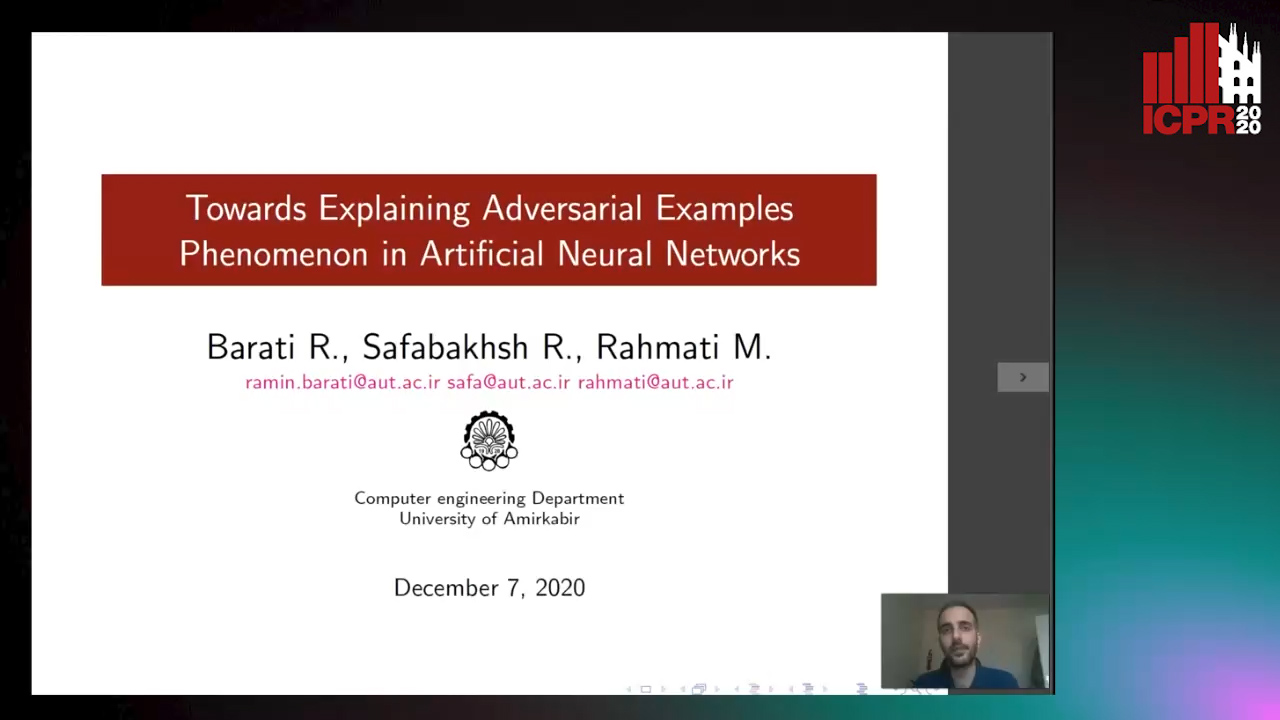
Auto-TLDR; Convolutional Neural Networks and Adversarial Training from the Perspective of convergence
Abstract Slides Poster Similar
MixNet for Generalized Face Presentation Attack Detection
Nilay Sanghvi, Sushant Singh, Akshay Agarwal, Mayank Vatsa, Richa Singh

Auto-TLDR; MixNet: A Deep Learning-based Network for Detection of Presentation Attacks in Cross-Database and Unseen Setting
Abstract Slides Poster Similar
Removing Backdoor-Based Watermarks in Neural Networks with Limited Data
Xuankai Liu, Fengting Li, Bihan Wen, Qi Li
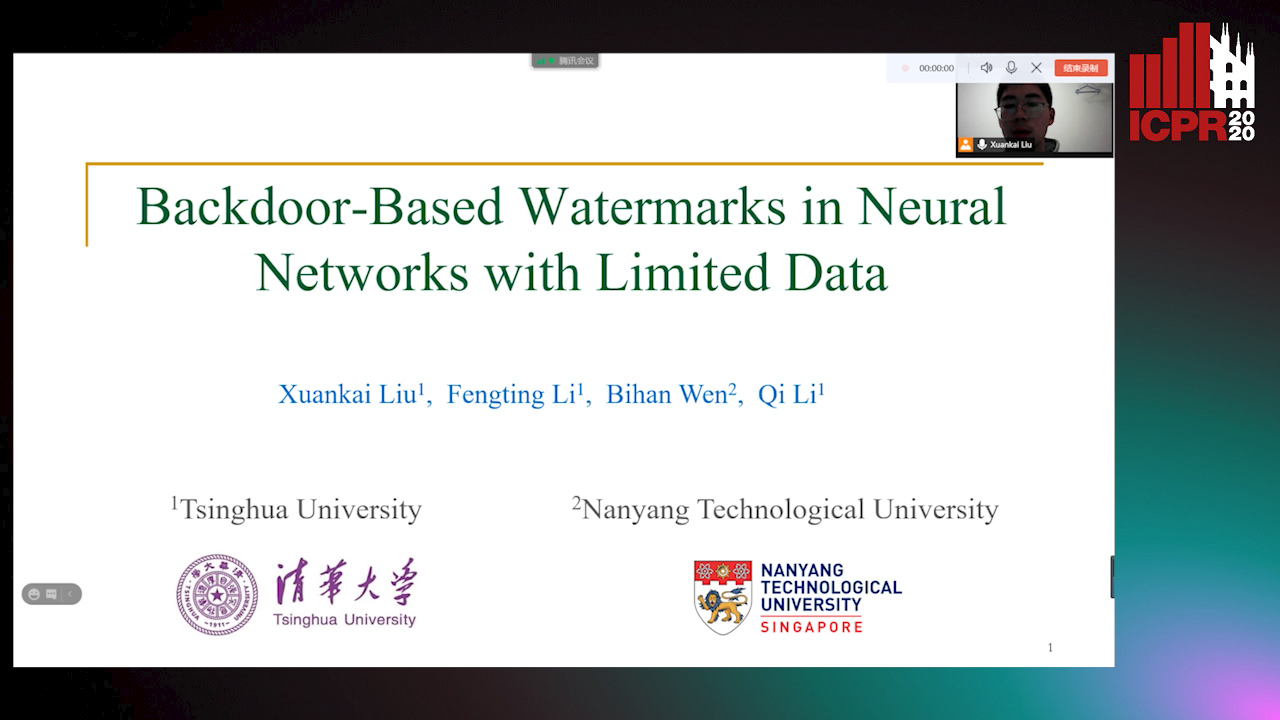
Auto-TLDR; WILD: A backdoor-based watermark removal framework using limited data
Abstract Slides Poster Similar
Learning with Multiplicative Perturbations
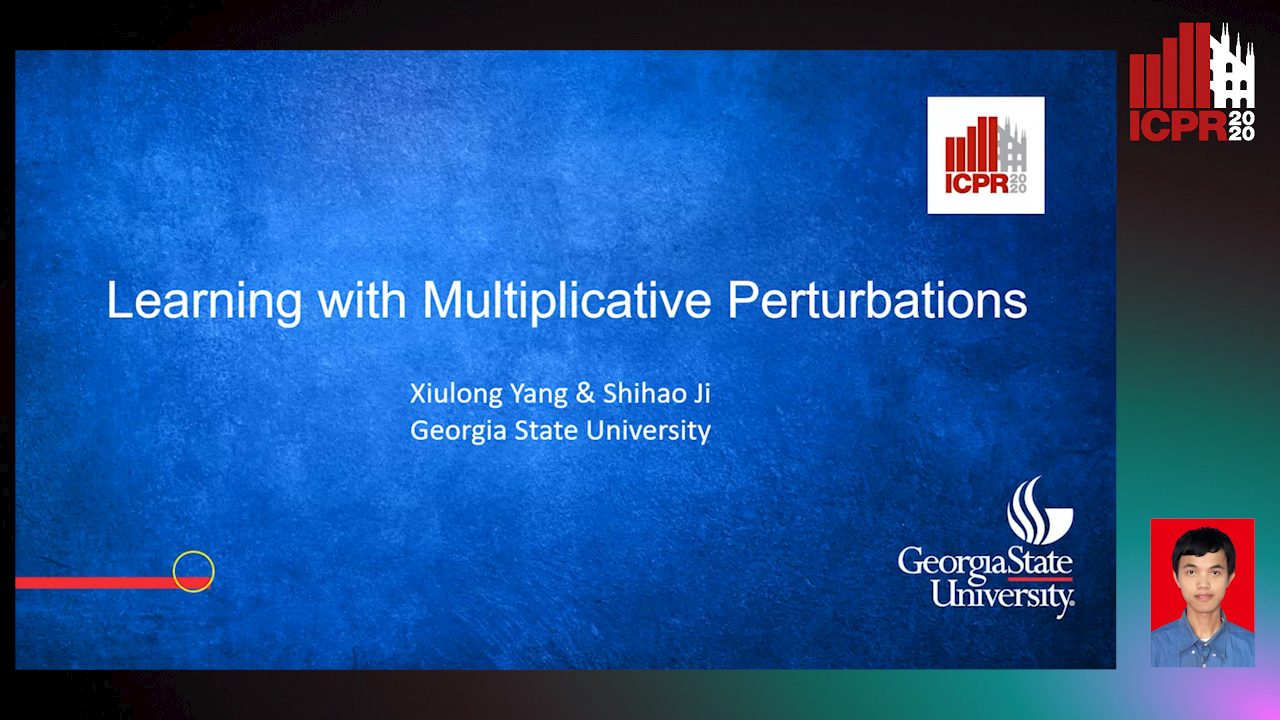
Auto-TLDR; XAT and xVAT: A Multiplicative Adversarial Training Algorithm for Robust DNN Training
Abstract Slides Poster Similar
CCA: Exploring the Possibility of Contextual Camouflage Attack on Object Detection
Shengnan Hu, Yang Zhang, Sumit Laha, Ankit Sharma, Hassan Foroosh

Auto-TLDR; Contextual camouflage attack for object detection
Abstract Slides Poster Similar
Boundary Optimised Samples Training for Detecting Out-Of-Distribution Images
Luca Marson, Vladimir Li, Atsuto Maki

Auto-TLDR; Boundary Optimised Samples for Out-of-Distribution Input Detection in Deep Convolutional Networks
Abstract Slides Poster Similar
Delving in the Loss Landscape to Embed Robust Watermarks into Neural Networks
Enzo Tartaglione, Marco Grangetto, Davide Cavagnino, Marco Botta

Auto-TLDR; Watermark Aware Training of Neural Networks
Abstract Slides Poster Similar
Overcoming Noisy and Irrelevant Data in Federated Learning
Tiffany Tuor, Shiqiang Wang, Bong Jun Ko, Changchang Liu, Kin K Leung

Auto-TLDR; Distributedly Selecting Relevant Data for Federated Learning
Abstract Slides Poster Similar
A Joint Representation Learning and Feature Modeling Approach for One-Class Recognition
Pramuditha Perera, Vishal Patel

Auto-TLDR; Combining Generative Features and One-Class Classification for Effective One-class Recognition
Abstract Slides Poster Similar
Transformer-Encoder Detector Module: Using Context to Improve Robustness to Adversarial Attacks on Object Detection
Faisal Alamri, Sinan Kalkan, Nicolas Pugeault
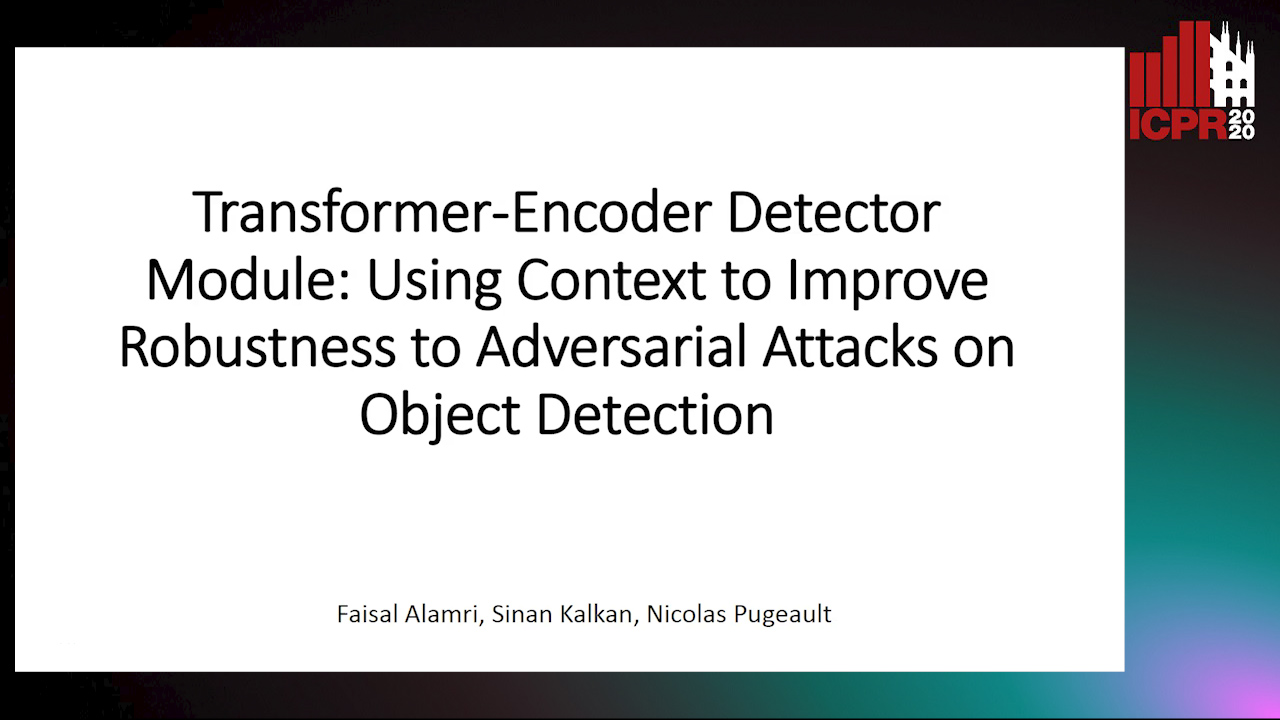
Auto-TLDR; Context Module for Robust Object Detection with Transformer-Encoder Detector Module
Abstract Slides Poster Similar
A Generalizable Saliency Map-Based Interpretation of Model Outcome
Shailja Thakur, Sebastian Fischmeister
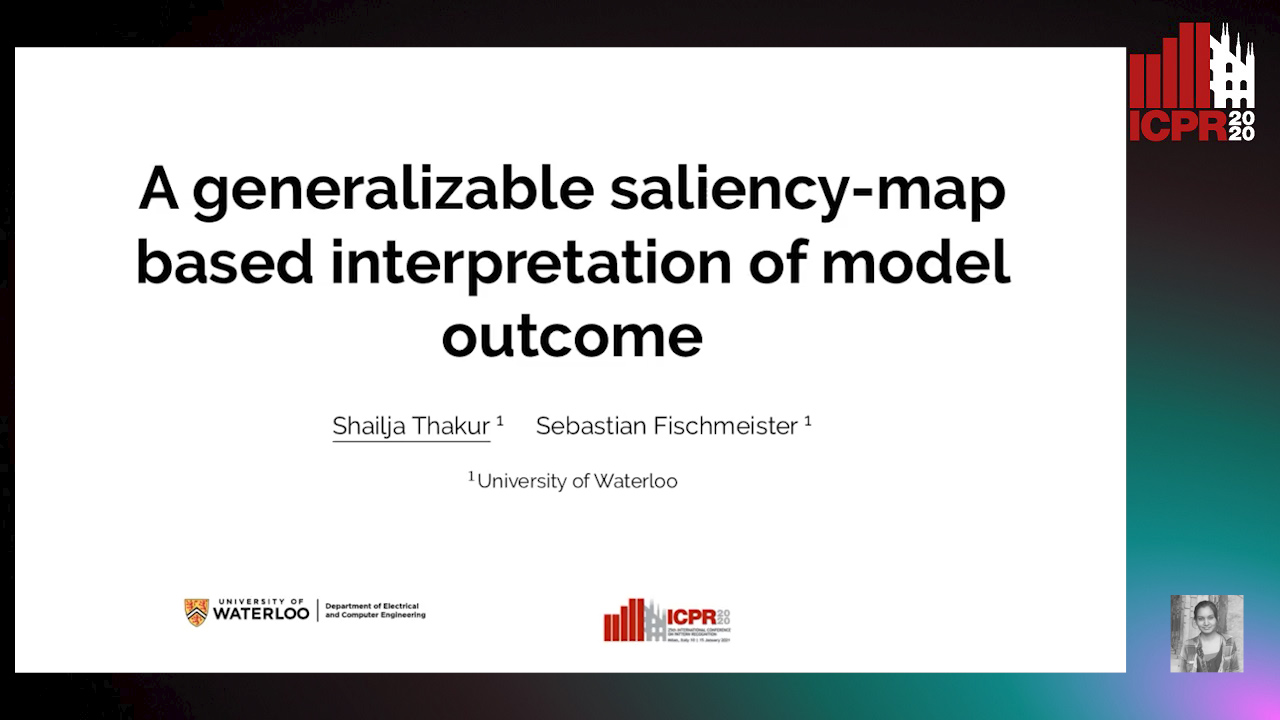
Auto-TLDR; Interpretability of Deep Neural Networks Using Salient Input and Output
On-Manifold Adversarial Data Augmentation Improves Uncertainty Calibration
Kanil Patel, William Beluch, Dan Zhang, Michael Pfeiffer, Bin Yang

Auto-TLDR; On-Manifold Adversarial Data Augmentation for Uncertainty Estimation
Discriminative Multi-Level Reconstruction under Compact Latent Space for One-Class Novelty Detection
Jaewoo Park, Yoon Gyo Jung, Andrew Teoh

Auto-TLDR; Discriminative Compact AE for One-Class novelty detection and Adversarial Example Detection
Image Representation Learning by Transformation Regression
Xifeng Guo, Jiyuan Liu, Sihang Zhou, En Zhu, Shihao Dong

Auto-TLDR; Self-supervised Image Representation Learning using Continuous Parameter Prediction
Abstract Slides Poster Similar
Adversarial Training for Aspect-Based Sentiment Analysis with BERT
Akbar Karimi, Andrea Prati, Leonardo Rossi
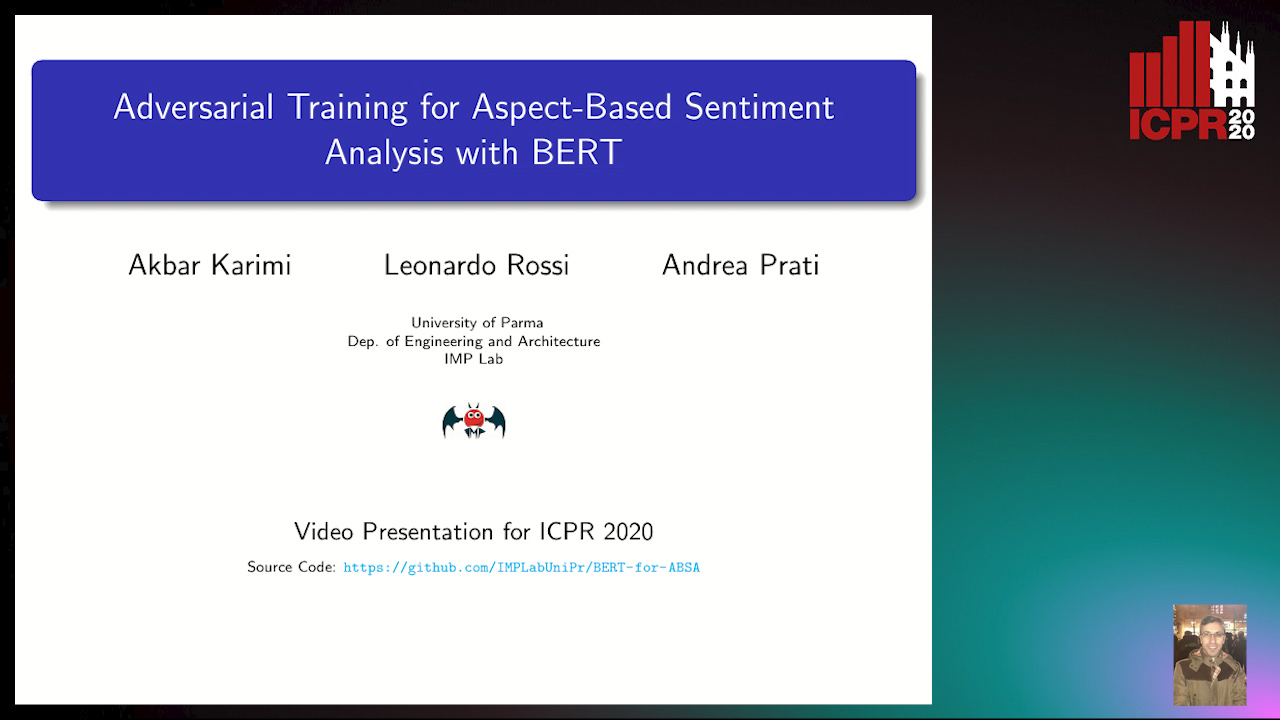
Auto-TLDR; Adversarial Training of BERT for Aspect-Based Sentiment Analysis
Abstract Slides Poster Similar
Generating Private Data Surrogates for Vision Related Tasks
Ryan Webster, Julien Rabin, Loic Simon, Frederic Jurie
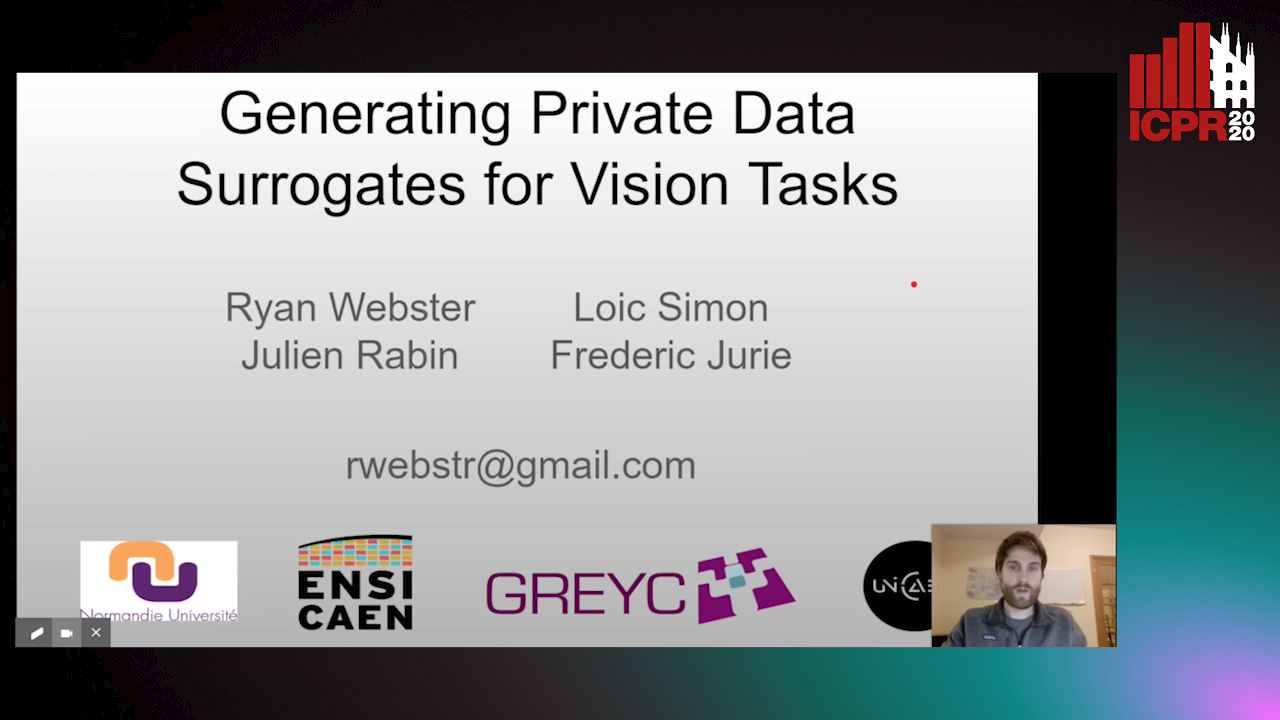
Auto-TLDR; Generative Adversarial Networks for Membership Inference Attacks
Abstract Slides Poster Similar
On the Evaluation of Generative Adversarial Networks by Discriminative Models
Amirsina Torfi, Mohammadreza Beyki, Edward Alan Fox

Auto-TLDR; Domain-agnostic GAN Evaluation with Siamese Neural Networks
Abstract Slides Poster Similar
Background Invariance by Adversarial Learning
Ricardo Cruz, Ricardo M. Prates, Eduardo F. Simas Filho, Joaquim F. Pinto Costa, Jaime S. Cardoso

Auto-TLDR; Improving Convolutional Neural Networks for Overhead Power Line Insulators Detection using a Drone
Abstract Slides Poster Similar
Probability Guided Maxout
Claudio Ferrari, Stefano Berretti, Alberto Del Bimbo

Auto-TLDR; Probability Guided Maxout for CNN Training
Abstract Slides Poster Similar
Combining Similarity and Adversarial Learning to Generate Visual Explanation: Application to Medical Image Classification
Martin Charachon, Roberto Roberto Ardon, Celine Hudelot, Paul-Henry Cournède, Camille Ruppli
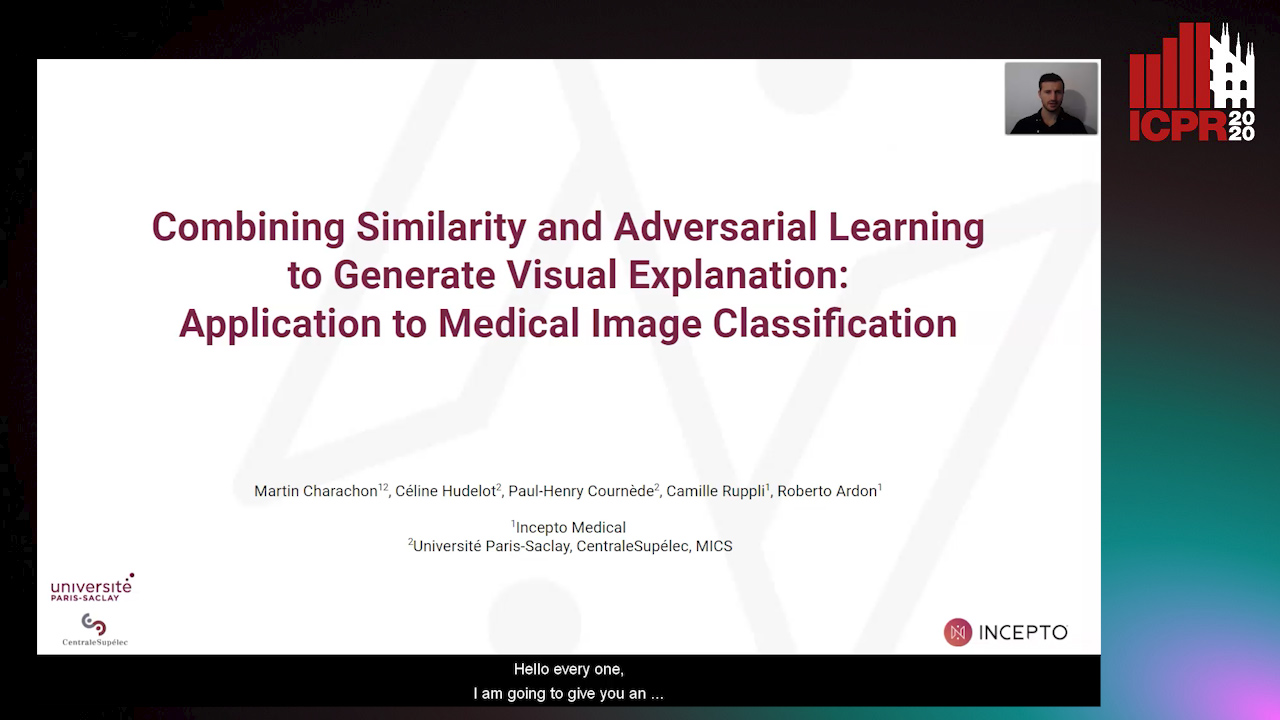
Auto-TLDR; Explaining Black-Box Machine Learning Models with Visual Explanation
Abstract Slides Poster Similar
Understanding Integrated Gradients with SmoothTaylor for Deep Neural Network Attribution
Gary Shing Wee Goh, Sebastian Lapuschkin, Leander Weber, Wojciech Samek, Alexander Binder

Auto-TLDR; SmoothGrad: bridging Integrated Gradients and SmoothGrad from the Taylor's theorem perspective
MINT: Deep Network Compression Via Mutual Information-Based Neuron Trimming
Madan Ravi Ganesh, Jason Corso, Salimeh Yasaei Sekeh
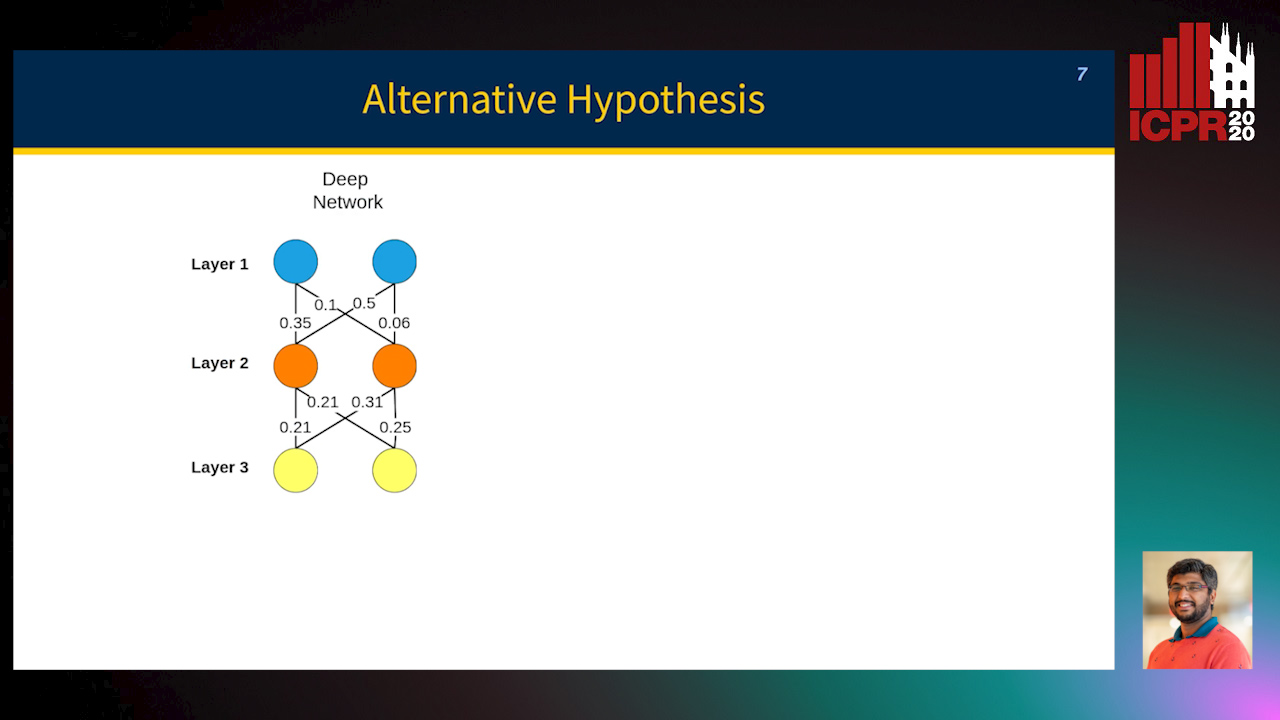
Auto-TLDR; Mutual Information-based Neuron Trimming for Deep Compression via Pruning
Abstract Slides Poster Similar
Investigation of DNN Model Robustness Using Heterogeneous Datasets
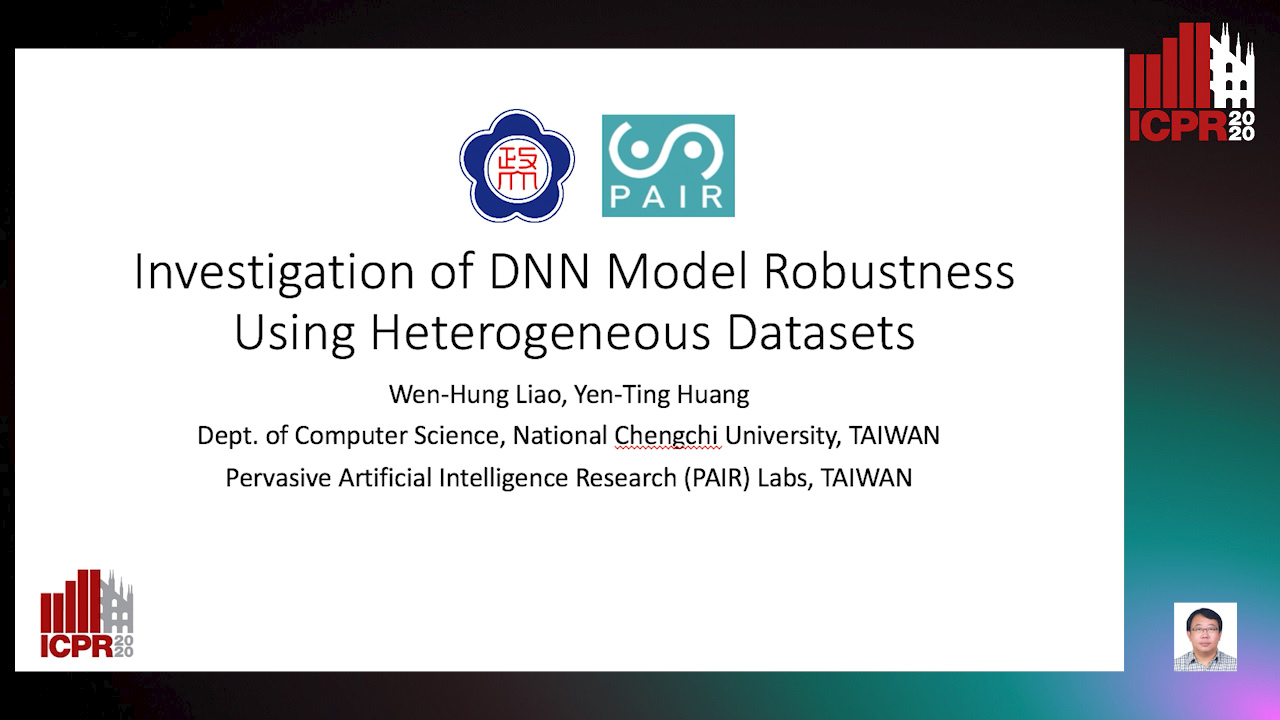
Auto-TLDR; Evaluating the Dependency of Deep Learning on Heterogeneous Data Set for Learning
Abstract Slides Poster Similar
InsideBias: Measuring Bias in Deep Networks and Application to Face Gender Biometrics
Ignacio Serna, Alejandro Peña Almansa, Aythami Morales, Julian Fierrez

Auto-TLDR; InsideBias: Detecting Bias in Deep Neural Networks from Face Images
Abstract Slides Poster Similar
Enlarging Discriminative Power by Adding an Extra Class in Unsupervised Domain Adaptation
Hai Tran, Sumyeong Ahn, Taeyoung Lee, Yung Yi

Auto-TLDR; Unsupervised Domain Adaptation using Artificial Classes
Abstract Slides Poster Similar
Iterative Label Improvement: Robust Training by Confidence Based Filtering and Dataset Partitioning
Christian Haase-Schütz, Rainer Stal, Heinz Hertlein, Bernhard Sick

Auto-TLDR; Meta Training and Labelling for Unlabelled Data
Abstract Slides Poster Similar
Initialization Using Perlin Noise for Training Networks with a Limited Amount of Data
Nakamasa Inoue, Eisuke Yamagata, Hirokatsu Kataoka
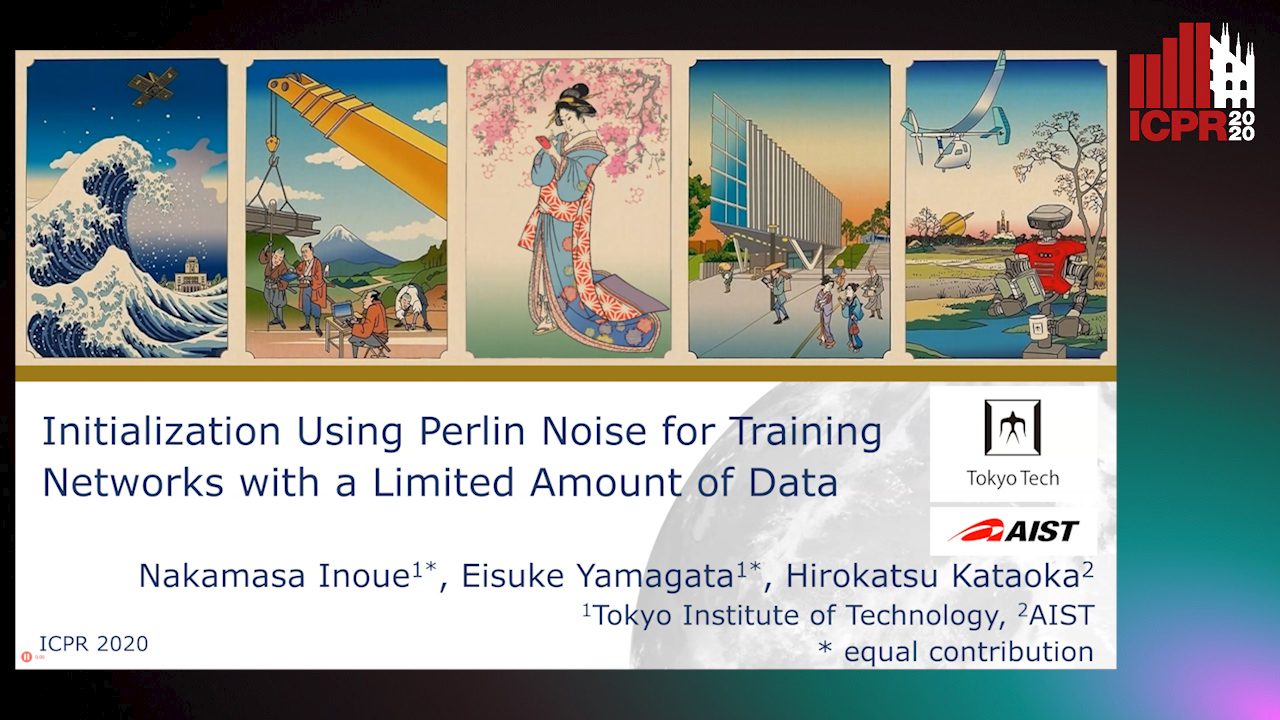
Auto-TLDR; Network Initialization Using Perlin Noise for Image Classification
Abstract Slides Poster Similar
Separation of Aleatoric and Epistemic Uncertainty in Deterministic Deep Neural Networks
Denis Huseljic, Bernhard Sick, Marek Herde, Daniel Kottke

Auto-TLDR; AE-DNN: Modeling Uncertainty in Deep Neural Networks
Abstract Slides Poster Similar